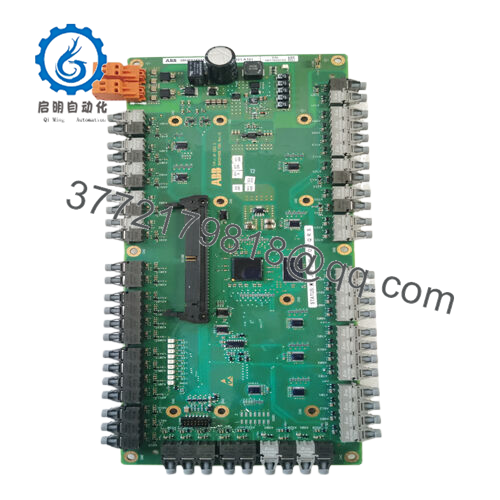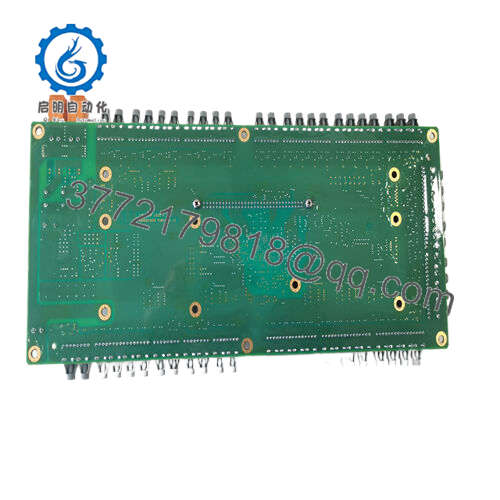Description
The ABB UFC921A101 (3BHE024855R0101) is a specialized interface and control board designed primarily for use within ABB’s Distributed Control System (DCS) platforms such as the Advant Master system. This board is critical in applications requiring precise control and monitoring of current signals, often serving as a gate driver module for controlling the IGBT power modules in excitation systems. Its application spans power generation, renewable energy systems, water treatment, and large-scale building infrastructure, where stable and high-performance control is necessary to maintain system reliability and efficiency.
Functionally, the ABB UFC921A101 collects and regulates input current signals, converting them into output signals that communicate with programmable logic controllers (PLCs) or other automation devices. It is designed to handle a wide range of analog input and output signals including 0-10 V, 0-20 mA, and 4-20 mA, supporting flexible integration. The board features smart processing capabilities for complex control tasks, ensuring optimal performance even in demanding industrial environments. Its varnished protective coating safeguards the electronics from moisture and contaminants, extending its durability and service life.
- UFC921A101 3BHE024855R0101
- UFC921A101 3BHE024855R0101
Technically, the board operates within an ambient temperature range of -10°C to +50°C and has dimensions approximately 170 mm by 100 mm by 20 mm, with a lightweight build around 0.3 kg. It manages output voltages from 0 to 500 V DC and currents up to 20 A, with support for frequencies ranging from 0 to 650 Hz, making it suitable for precise motor or excitation control applications. The module supports communication with up to 16 Masterbus 300 nodes, facilitating connectivity with a variety of digital and analog I/O devices in complex control networks.
| Parameter | Value |
|---|---|
| Model | ABB UFC921A101 (3BHE024855R0101) |
| Manufacturer | ABB |
| Product Type | Interface/Control Board |
| Input Voltage Range | 0-10 V, 0-20 mA, 4-20 mA (Analog inputs) |
| Output Voltage | 0-500 V DC |
| Output Current | 0-20 A |
| Frequency Range | 0-650 Hz |
| Operating Temperature | -10°C to +50°C |
| Dimensions | Approx. 170 mm x 100 mm x 20 mm |
| Weight | Approx. 0.3 kg |
| Connectivity | Supports up to 16 Masterbus 300 nodes |
| Protection | Varnished for moisture and contaminant resistance |
Related ABB modules often used in conjunction with the UFC921A101 include:
ABB UFC922A101 – Complementary interface board with extended communication features.
ABB SDCS-CON-2A 3ADT309600R0002 – Control board used for managing advanced control signals.
ABB RETA-01 Ethernet Adapter Module – Provides Ethernet communication capabilities in control systems.
ABB DATX100 Transformer Board – Power supply and transformer integration board for control modules.
ABB BAMU-01C Frequency Converter Board – Used in conjunction with control boards for motor speed regulation.
Installation recommendations for the ABB UFC921A101 emphasize careful handling to avoid damage during setup. It should be mounted within a well-ventilated control cabinet with protection from excess moisture and dust. Proper wiring and secure connections to analog and digital interfaces are essential for reliable operation. Grounding and shielding measures reduce electrical noise interference, maintaining signal accuracy.
Maintenance includes periodic inspections and cleaning to preserve the varnished coating’s protective qualities. Firmware should be kept updated where applicable, and signal diagnostics monitored to detect any deviations early. These practices help prevent unexpected failures and prolong the operational life of the interface board.



 WhatsApp: +86 16626708626
WhatsApp: +86 16626708626 Email:
Email:  Phone: +86 16626708626
Phone: +86 16626708626


